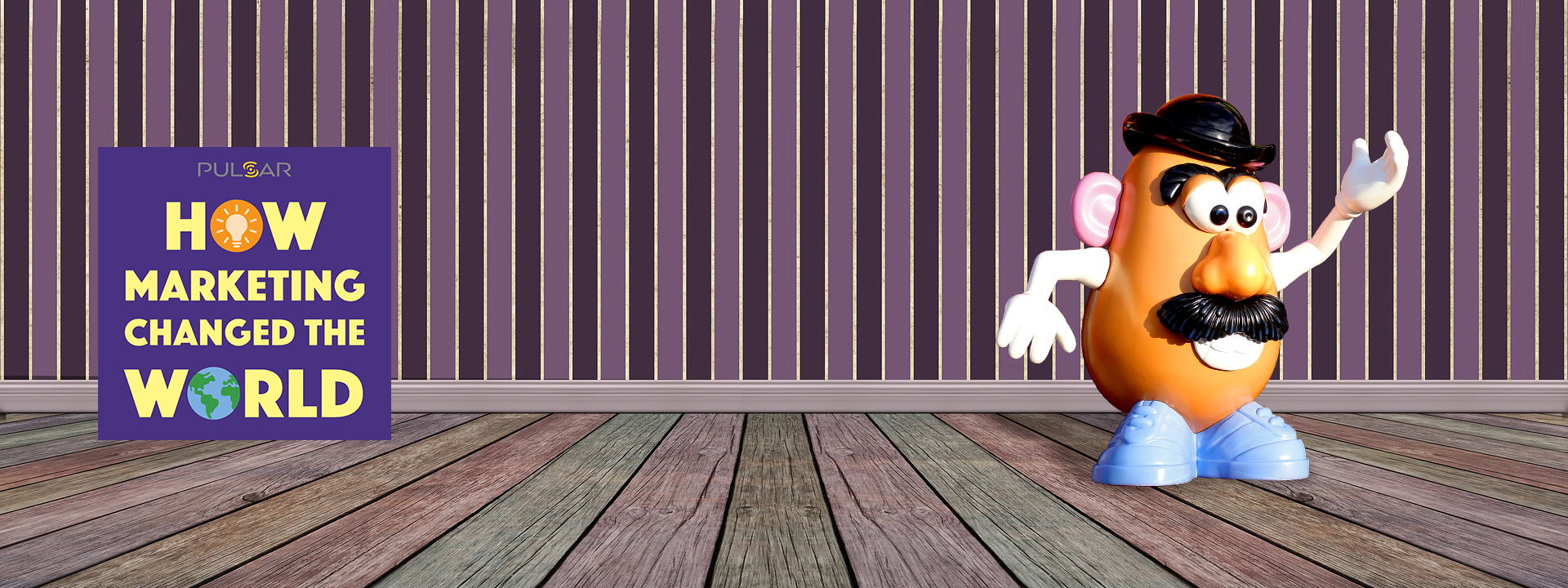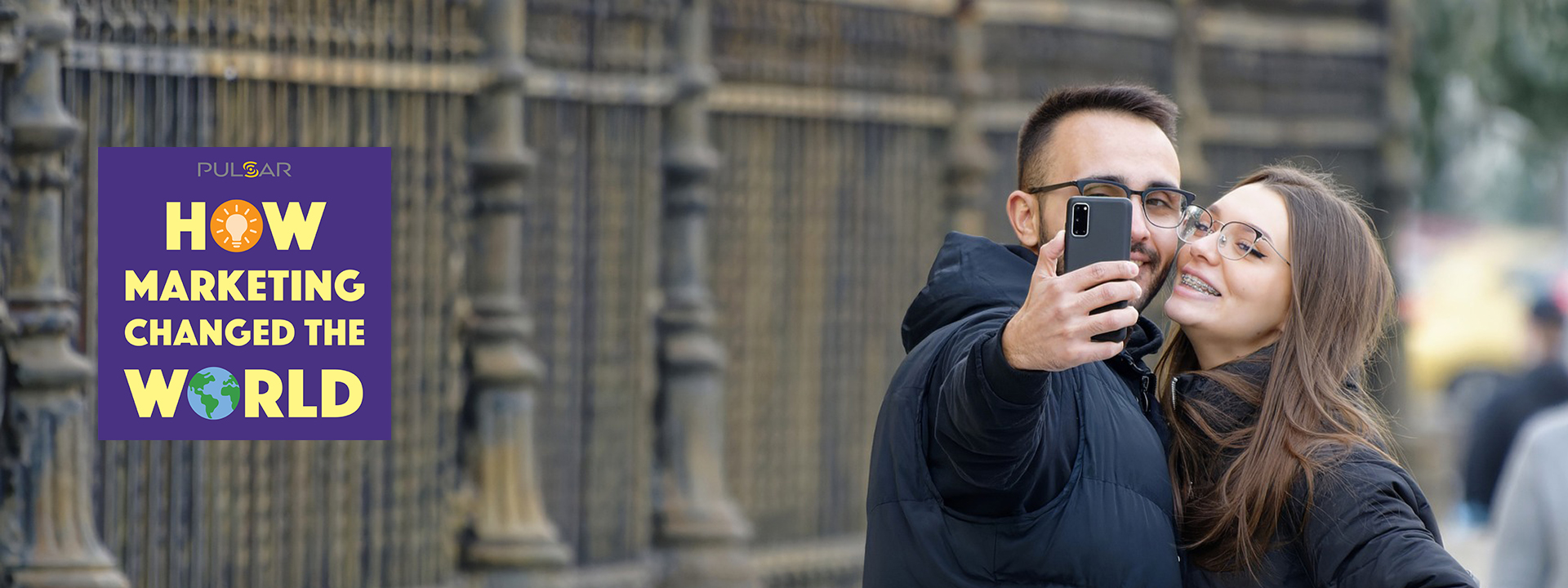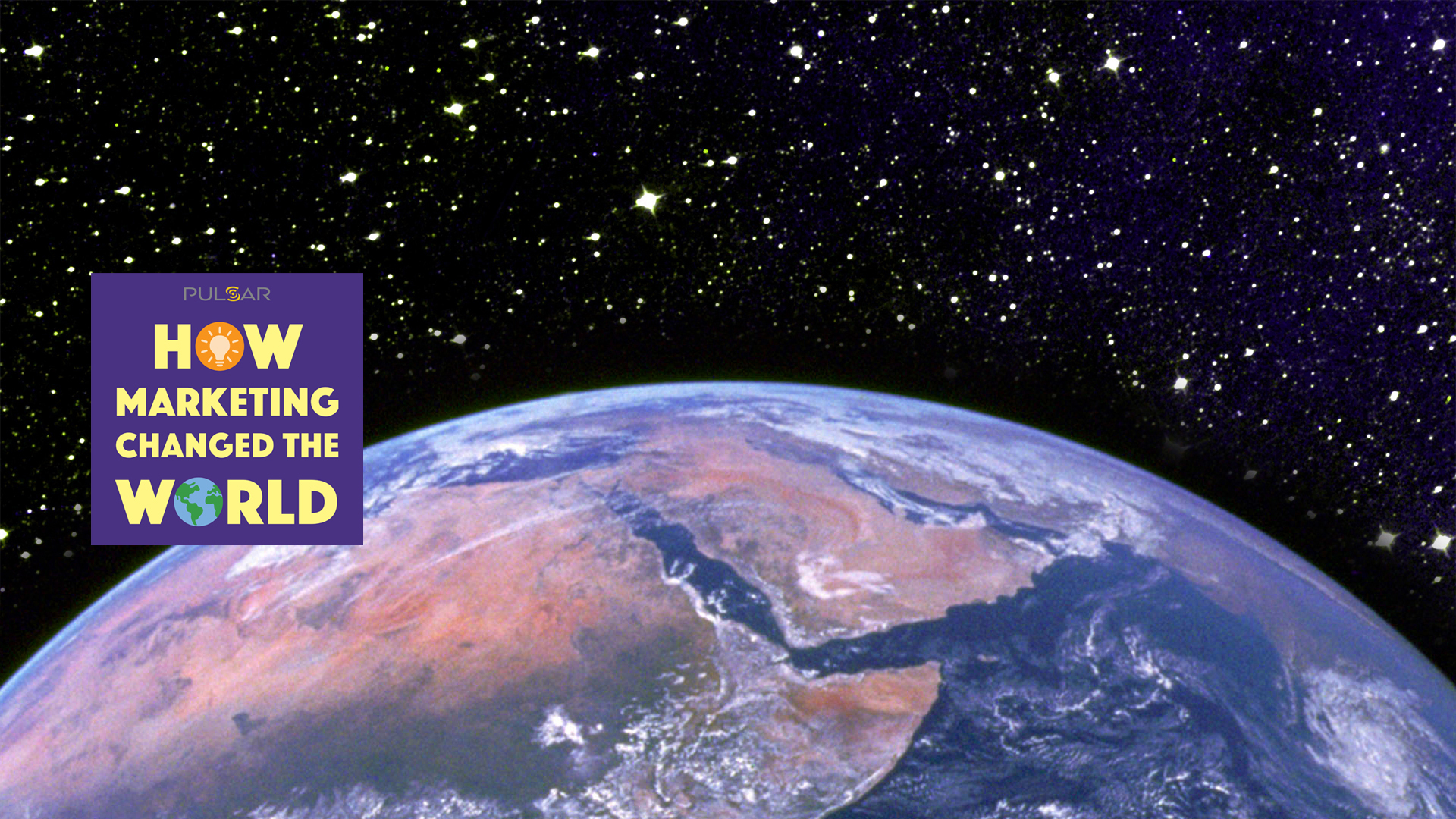
CAN SPOTIFY SAVE ITSELF?
The music industry continually views the year 1999 as both its crowning achievement and the beginning of the end. That year saw peak sales of compact discs, the first digital form of music, totaling $14.6 billion. That same year, Napster was launched, allowing free digital music downloads until it was sued out of existence in 2001. But the damage had been done, and the music industry found itself in a downward spiral of continually diminishing revenues. But in 2011, a solution appeared that promised to reverse this trend. That year, Spotify launched its application in the United States, and by 2014, music revenues were growing more than 6% every year. This is how Spotify saved the music industry.

MR. POTATO HEAD
According to a study released by Harvard, social media companies made almost $11 billion from children in 2022. The most frequently cited figure on children's exposure to media advertising claims that, on average, children are targeted more than 3000 times every day. That doesn't represent how many times children actually see ads, obviously, because that figure is ridiculously high, but it demonstrates the importance children play in the minds of advertisers. Children under 18 account for $180 billion in spending every year in the United States. But this wasn't always the case. As recently as 70 years ago, no company dreamed of advertising directly to children. But a textile company that had evolved into a toy company, Hassenfeld Brothers, changed everything the moment they decided to experiment with a brand new medium: television.

TESLA'S FUTURE LOOKS LIKE THE PAST
On February 6, 2023, an investor named Charlie Bilello posted a tweet comparing the financial performance of Tesla with GM and Ford. The post compared figures from 2012 and 2022. In 2012, GM and Ford revenues exceeded $130 billion, while Tesla revenues were $413 million, less than 1% of the automotive juggernauts. By 2022, Tesla revenues had increased to 52% of GM and Ford, but more importantly, its profits had surpassed its competitors. Tesla CEO Elon Musk retweeted the post with the caption "How times have changed." Various media outlets repeated the figures with headlines like "Tesla Makes Twice as Much Money as GM and Ford Combined" and "Tesla Will Overthrow GM and Ford by 2027." The news doubled Tesla's market valuation to nearly $800 billion, 16 times more than both GM and Ford, which were valued at $49 billion. So is the hype warranted, are the analyses true, and most importantly, is the data complete?

ALUMINUM
There are several examples of differences that exist between American and British English. Americans do not spell color or favorite with the letter "u." Brits spell colonize and apologize with an "s" rather than a "z," and would add that the letter is actually zed. British pronunciation differs for words like garage, privacy, and controversy. While a lot of speculation exists that tries to explain the origins of these differences, much of it is shrouded in history and mystery. Some of it is timing, some of it is the isolation of an ocean, some of it is resentment of colonization, and some of it is just the natural evolution of language. But there's one word that we know definitively when and how it changed in America. And it was changed by a company.

WHO KILLED THE POST OFFICE?
In 2006, Congress passed the Postal Accountability and Enhancement Act. Instituting a number of changes, the most interesting one was the mandate that the United States Postal Service must fund in advance the health and retirement benefits of all postal employees for 50 years. Numerous articles have been published over the past 17 years citing this one requirement as the downfall of the Post Office. The argument is that Congress took an organization with $6 billion in profits and turned it into a massive failure with $160 billion of debt. According to the data, is that what really happened?

WINE
In 2022, California shipped almost 270 million cases of wine around the world, collecting over $50 billion. The United States is the fourth largest producer of wine (behind France, Italy, and Spain) and the number one consumer of wine. But this wasn't always the case. In the early days of the country, Thomas Jefferson fought to create a culture that enjoyed wine, believing the United States would become more refined as a society if it were more like France. His dream would become a reality, but only after two key marketing ideas were introduced in the 20th century.

COLLEGE ON A CURVE
The familiar A through F grading system seems to have been invented at Mount Holyoke College in Massachusetts in 1884. By the 1940s, this system had been mapped to corresponding percentages and was the dominant form of grading used in most U.S. educational institutions. The scale was centered around 70% as an average level of acceptable performance, granting a letter grade of C. Anything below that was considered unsatisfactory, and anything above that was considered superior. Work that was in the top 10% of all students was deemed excellent, and awarded an A. This empirical gauge, originally conceived as a standard bell curve with most students in the middle, held true through the first half of the 20th century. But something changed around 1960.

THE PLEDGE OF ALLEGIANCE
On June 22, 1942, Congress adopted the Pledge of Allegiance as the official oath of the United States. In addition, the law also created the official Flag Code, including regulations for display, care, and etiquette of the American flag. The only change made to the Pledge after it was signed into law was on June 14, 1954, when two words were added, rendering it in its current state today.

THE OLYMPICS BANKRUPTCY MACHINE
In 1970, Denver, Colorado, was awarded the 1976 Winter Olympics. Everyone felt the location would be ideal to celebrate both America's bicentennial and Colorado's centennial. Despite the fact that the previous Winter Olympics had cost over $1 billion to produce, Denver boasted that they could do it for $14 million. But the citizens of Denver disagreed, and after two years of protests and pushback, Denver became the first, and only, city to rescind their bid to host the Olympics. The move forced the International Olympic Committee (IOC) to scramble for a new host, and in three months, the group chose Innsbruck, Austria, the Winter Olympics host twelve years earlier. The 1976 Games ended up costing over $100 million, more than seven times Denver's original estimate. Montreal's Summer Games that same year came with a $6 billion price tag and a $1.5 billion loss, bankrupting the city and saddling its citizens with 30 years of debt. Denver and Montreal sparked a discussion that continues to this day. Is it ever worth it for any city to host a megaevent like the Olympics, and if not, why do we keep doing it?

THE OLYMPICS
Next month, on April 16, one of the most enduring rituals of the past century will begin. In a sacred ceremony in Olympia, Greece, the birthplace of the Olympics, the rays of the sun will light the Olympic torch, and it will begin its journey to Paris. Over 68 days, 10,000 different people will carry the torch throughout France, ultimately arriving across the Seine from the Eiffel Tower on July 26 for the now iconic and epic Opening Ceremony of the XXXIII Olympiad. This event is so deeply entrenched in the lore and culture of the games that it would seem to have always been a part of the Olympics, but along with most of the other aspects of the games that have elevated them to legendary status, it had a definite beginning. It all started in 1936 with a truly despicable propaganda campaign.

UNTYING THE DATA FROM THE KNOT
The Knot is the number one wedding network in the United States with over 11 million monthly visitors, and reaches 8 out of 10 brides. In 2022, the company surveyed 12,000 of its users to provide its annual wedding statistics. Among dozens of data points, that survey reported that couples in America spent an average of $5800 on engagement rings. As the wedding authority, this statistic from The Knot is cited by numerous media outlets, including Vogue and American Express. There's just one problem: that figure isn't true. That same year, Today's Wedding Jewelry Consumer, an independent market research firm dedicated to the wedding jewelry industry, released the actual purchasing data for engagement rings, and it was significantly less: $3670. The fact that The Knot's figure is so far off and gets cited far more often reveals a lot about us as a culture and the wedding industry as a business.

DIAMONDS
In 2022, over 2 million engagement rings were sold in the United States. Almost 90% of those rings featured diamonds. That same year, diamond sales made up $340 billion of the global economy. But historically, diamonds were never that popular, and certainly weren't associated with marriage. That cultural shift occurred in the 1940s when one company decided to redefine the marriage proposal.

KODAK'S WILD RIDE
The Eastman Kodak Company was officially formed in 1901, right after the company invented the first inexpensive, portable, personal camera. By 1992, Kodak was a $20 billion company, and the 18th largest business by revenue in the United States. Twenty years later, the company filed for bankruptcy. Kodak's story has become a classic, cautionary tale about a business that developed tunnel vision, refused to diversify, and actively fought technological developments. It's an overly simplified story that is easier for us to understand and repeat, but the actual data tells a different story.

SELFIES
The word "selfie" first appeared in an Australian internet forum in 2002. By 2013, "selfie" was declared the "word of the year" by the Oxford English Dictionary. With the invention of the digital camera in 1975, and the first phone with a camera in 1999, photography had evolved to allow an individual to effectively take a snapshot of anything at any time. But it wasn't just technology which caused this phenomenon to explode around the world. The vision of this behavior was actually cast in the early 1900s with an innovative marketing campaign.

HOW MARKETING CHANGED THE WORLD
Culture changes constantly. Most of us think it happens organically, shaped by things like technology, art, politics, or activism. But you'd be surprised how many deep-seated behaviors and beliefs were actually created by carefully-crafted marketing campaigns. Smiling for photos, diamond engagement rings, even the pledge of allegiance - all of these were created by a corporation that was intentionally trying to change our minds, and it worked. In How Marketing Changed the World, we'll explore the fascinating true stories behind some of the most successful, and often unknown, marketing campaigns of all time. Join us every month to learn how powerful marketing can be, and perhaps how to rethink or enhance the promotion of your own brand.

THE DATA BEHIND THE BUSINESS
Data not only provides a more accurate view of things; it can also tell better stories. In a world of catchphrases and memes, we'd all like a more researched and robust picture of the business world. What factors were most significant for the meteoric rise and fall of certain companies, and was their trajectory truly meteoric? How true are the organizational narratives we've all been conditioned to believe? Were the most celebrated advertising campaigns actually as successful as everyone thinks they were? Every month in The Data Behind the Business, we'll look at hard numbers and statistics to get a better understanding of how industries are actually shaped. The truth will surprise you, and may also change the way you look at your own business.

PULSAR ANIMATES SAFER TOGETHER CHATS
Pulsar recently created graphics and animations for the new York County Safety Collab podcast - Safer Together Chats. These monthly episodes focus on bringing law enforcement and the York County community together to discuss efforts toward public safety in our neighborhoods. The ultimate goal is help the entire York County community be "safer together" through trust and transparency.

PULSAR OFFERS DIGITAL SOLUTIONS COURSE
Pulsar just completed a seven-week elective course on digital solutions for high-school students at Logos Academy. Logos Academy is a private, K-12 school in York, PA, dedicated to providing an excellent and affordable education for all families, and reserves two-thirds of classroom seats for students who live below or near the federal poverty line.

PULSAR PROMOTES THE YORK COUNTY SAFETY COLLAB
Pulsar has been chosen to promote the York County Safety Collab, one of the most exciting and progressive efforts to address increasing national unrest surrounding the fair policing of our communities. The York County Safety Collab is a powerful initiative which is actively restoring hope in our communities, confidence in our legal system, and trust in our police.

PULSAR TEACHES MARKETING TO STUDENTS
Pulsar recently hosted a marketing class for the students of Logos Academy. Logos Academy is a private, K-12 school in York, PA, dedicated to providing an excellent and affordable education for all families, and reserves two-thirds of classroom seats for students who live below or near the federal poverty line.







